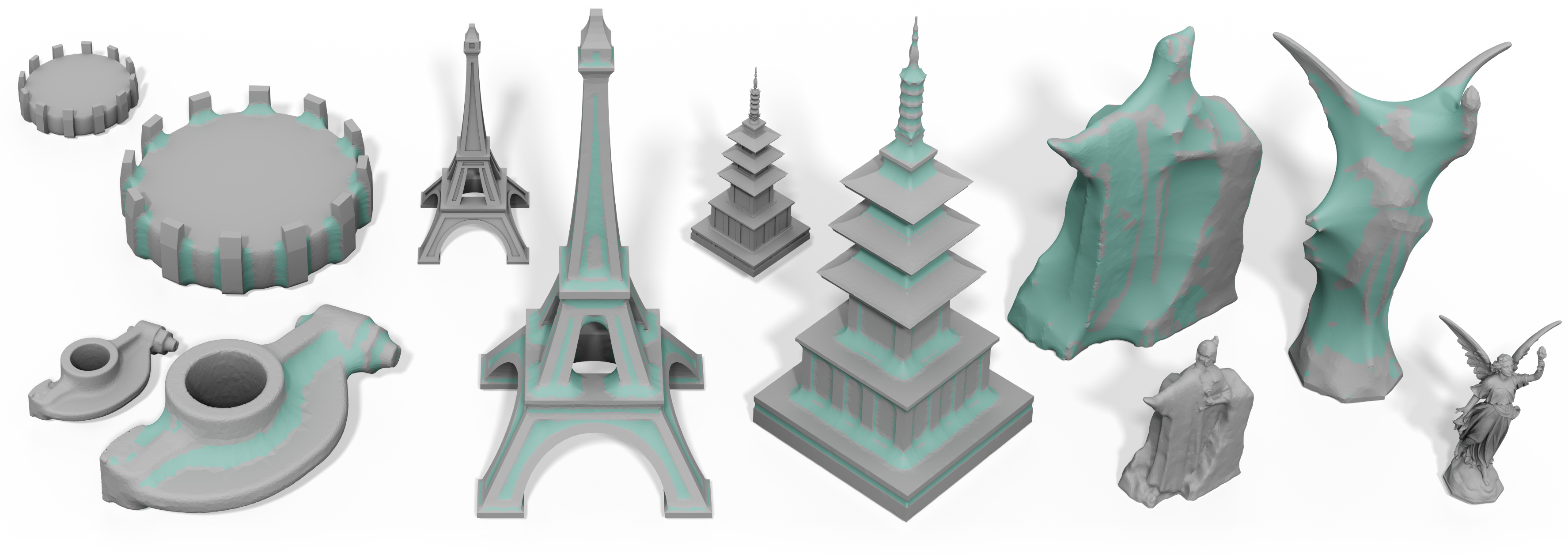

We propose a new type of curvature flow for curves in 2D and surfaces in 3D. The flow is inspired by the mathematical morphology opening and closing operations. These operations are classically defined by composition of dilation and erosion operations. In practice, existing methods implemented this way will result in re-discretizing the entire shape, even if some parts of the surface do not change. Instead, our surface-only curvature-based flow moves the surface selectively in areas that should be repositioned. In our triangle mesh discretization, vertices in regions unaffected by the opening or closing will remain exactly in place and do not affect our method’s complexity, which is output-sensitive.
@article{Sellan:Opening:2020,
title = {Opening and Closing Surfaces},
author = {Silvia Sell{\{a}}n and Jacob Kesten and Ang Yan Sheng and Alec Jacobson},
year = {2020},
journal = {ACM Transactions on Graphics},
}
The first three authors were supported by the 2018 Fields Undergraduate Summer Research Program. Silvia Sellán was also funded by the 2017 - 2019 María Cristina Masaveu Peterson Scholarship for Academic Excellence. This project is funded in part by NSERC Discovery (RGPIN2017–05235, RGPAS–2017–507938), New Frontiers of Research Fund (NFRFE–201), the Ontario Early Research Award program, the Canada Research Chairs Program, the Fields Centre for Quantitative Analysis and Modelling and gifts by Adobe, Autodesk and MESH Inc.
We thank Daniel de la Fuente, Héctor Jardón Sánchez, David Levin, Mirela Ben-Chen, Oded Stein, Leonardo Sacht, Etienne Corman, Noam Aigerman and Derek Liu for their insightful conversation and advice; Ryan Schmidt for his help with the remeshing step of our method; Keenan Crane for sharing his Discrete Differential Geometry slides with us; Josh Holinaty for milling the example in Fig. 7 and modelling the ring in Fig. 26; Rahul Arora and John Kanji for their help putting together the supplemental video; Yasaman Rohanifar for narrating it and Abhishek Madan, Honglin Chen and Ruiqi Wang for proofreading.